10 Superman Villains Who Don’t Need Kryptonite
Nothing but Kryptonite can hurt Superman. This is common knowledge, as ingrained in the popular consciousness as anything can hope to be. Like many such pieces of common knowledge, however, it is at best, loosely true. Kryptonite is one of Superman’s weaknesses, and, at the height of his power in the 1960s, was one of the few things that could, along with magic, hope to injure him. The comics have long since moved on, though, and Superman has accumulated a sizable number of adversaries who do not require Kryptonite to harm him. The general rule, it seems, is that if one is as powerful as Superman, or at least in the ballpark, one can harm, or even best, the Last Son of Krypton. The list that follows is made up of ten villains or groups of villains who can claim this distinction. Some of them have been around since the earliest days of the comics, others are recent inventions, but all demonstrate that the Kryptonite only myth is exactly that–a myth, present in the minds of the public, but not the actual source material.
This is not meant to be an exhaustive list. It contains only foes that are specific to Superman, and thus cannot feature Darkseid, the Anti-Monitor or Superboy-Prime, all general DC Universe villains if ever there were any. Nor can it feature the Pre-Crisis incarnation of Power Ring, the evil, Earth-3 Green Lantern, who in “Crisis on Earth-3” used his magic ring to utterly humiliate the Man of Steel. The author’s intent is to highlight what Superman’s own rogues gallery is capable of, and in doing so, give the lie to the notion that without Kryptonite, no good Superman story can be told. Characters are ranked based on a combination of factors including uniqueness, importance to the Superman mythos, length of publication, and influence on characters who came after them, as well as more obvious traits like level of power and how close they have come to killing Superman.
10. General Zod
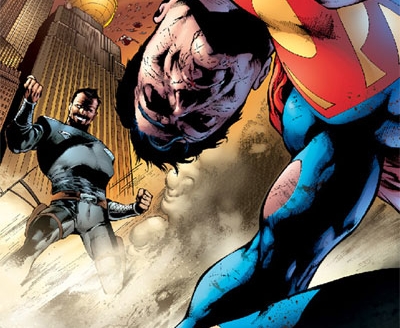
When Superman’s power reached its Silver Age zenith, writers were left struggling to develop new and interesting adversaries for him. Then, in April of 1961, Robert Bernstein and George Papp hit on the idea of introducing Kryptonian criminals. Sealed up in an alternate dimension known as the Phantom Zone, which Krypton had used in place of capital punishment, these criminals could, on occasion, escape into the main DC Universe, where they gained all the same abilities as Superman. The first prisoner to do so, in that same April 1961 issue, was a renegade general named Zod, imprisoned for trying to overthrow Krypton’s government with an army of clones.
A relatively minor villain in the 1960s, Zod gained new life in 1980, when Superman II decided to use him as its main antagonist, hiring actor Terence Stamp to portray the general. Stamp’s iconic, hammy performance redefined Zod, forever earning him a place in the mind of Superman fans and casual filmgoers alike. Following the 1985 “Crisis on Infinite Earths”, and DC’s ban on all Kryptonian characters save Superman himself, Zod temporarily vanished from continuity, but did not stay gone for long. Writers found loopholes, and a number of alternate universe doppelgangers danced in the original’s place, until the ban was lifted in the early 2000s. In 2006, the real General Zod came roaring back into the comics with a vengeance. A one-time friend and ally of Superman’s father, Jor-El, Zod blamed Jor-El for failing to prevent Krypton’s destruction, and aimed to kill Superman and recreate Krypton on Earth. Where Superman is the ultimate immigrant, Zod is the living representation of everything that was wrong with the Old Country, bringing old blood feuds and dictatorial aspirations to Earth rather than trying to fit in. Superman has adapted to Earth’s culture, but Zod either cannot or will not, and that, as much as the General’s grudge against the House of El, leaves them forever at cross-purposes.
Possessed of all Superman’s powers, and driven by an obsessive need to rebuild Krypton under his own control, Zod provides a dark look at what an evil Man of Steel would be like. Warped by years in the Phantom Zone, Zod is perfectly willing to commit xenocide against the puny humans of Earth, and his military training and tactical brilliance give him the edge in any head-to-head confrontation with Superman. Superman himself is aware of this, which is why, despite his distaste for the alternate dimensional prison, he has always opted to return Zod to the Phantom Zone at the first possible opportunity. At one point, Superman even considered entering the Phantom Zone himself to take up a permanent post as Zod’s jailer, which is as good a measuring stick as any for how seriously he takes the General’s threat.
9. The Phantom Zone Criminals
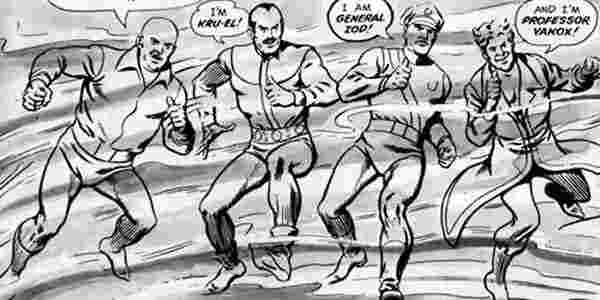
Zod is not alone in the Phantom Zone, and never has been. Following its discovery by Jor-El, the Zone became a holding pen for all of Krypton’s worst criminals. Separated by guild, social status, and the nature of their crimes, the Phantom Zoners are united only by their desire to escape and their hatred for those who imprisoned them. With Jor-El and the rest of Krypton’s leadership long since dead, it is Superman who bears the brunt of their hatred, and escapees from the Zone are almost guaranteed to target the Man of Tomorrow upon breaking free.
The Zoners are a diverse lot when it comes to what saw them imprisoned in the first place. Faora Hu-Ul was a misandrist serial killer and martial artist locked away for murdering numerous men. Quex-Ul was a poacher, imprisoned for killing a herd of sacred rondors. Corrupt physician Doctor Xadu performed unethical cryogenic experiments on his patients. Worst of all after Zod himself was mad scientist Jax-Ur who blew up Krypton’s lunar colony and later, in modern continuity, tried to bring a version of Kryptonian god Rao to life on Earth. Superman II added Zod’s wife, Ursa—often conflated with Faora by later writers—and the mentally handicapped but frighteningly strong Non to the roster.
Little different from the petty criminals and supervillains of Earth in their motivations, the Phantom Zoners are all as strong, as fast, and as durable as Superman. When united under a charismatic leader like Zod their threat is multiplied, turning them into an army that can brush aside the combined might of the JLA and Earth’s military. To stop the Zoners Superman has been pushed into alliances with Lex Luthor and his Superman Revenge Squad, and has even has to resort to arming himself with Kryptonite weapons, indicating just how great a danger the Zoners pose to all Superman holds dear.
8. Silver Banshee
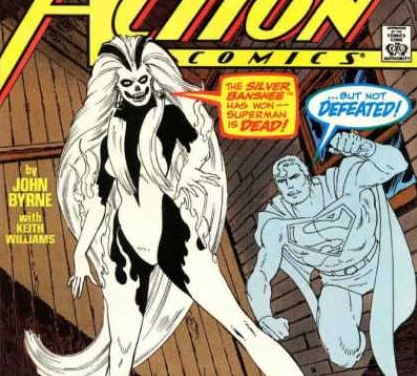
Superman has never done well against magic. The reality-defying nature of mysticism bypasses many of Superman’s natural defences, harming him in ways that conventional weapons, and even Kryptonite, cannot. Despite this, few of the Man of Tomorrow’s long-term adversaries are magically based, perhaps due to the character’s deep entrenchment in the world of pulp science-fiction. The Silver Banshee is one of the rare exceptions to this rule, and one of the only independent female villains in Superman’s rogues gallery.
Introduced in 1987, the original Silver Banshee was the ghost of a Celtic woman named Siobhan McDougal who made a deal with a mystic entity to escape the Limbo that her murderous uncle and brother had trapped her in. Returning to modern day Metropolis, the Banshee repeatedly faced off against Superman, becoming a permanent member of his rogues gallery. In the New 52, an Irish immigrant named Siobhan Smythe took on the Silver Banshee identity and allied with Supergirl against her father, the undead horror known as the Black Banshee. Whether this new Silver Banshee will remain good, or follow the example of her predecessor and her father is yet to be seen.
The Silver Banshee has a degree of superstrength and heightened durability, but her true power lies in her sorcerous scream, which is death to almost all who hear it, reducing them to little more than desiccated corpses. Superman is more resistant to her scream than the average mortal, but can still be injured by it, as repeat exposures sap his strength. A good Silver Banshee story can take on overtones of the horror genre, as Superman tries to find a way around her scream’s magic before it can kill him and everyone else in the vicinity. Less well known than many of the others on this list, the Silver Banshee earns her place through her comparatively unique concept, and her refusal to let anything, even Superman, get in the way of her return to life.
7. Parasite
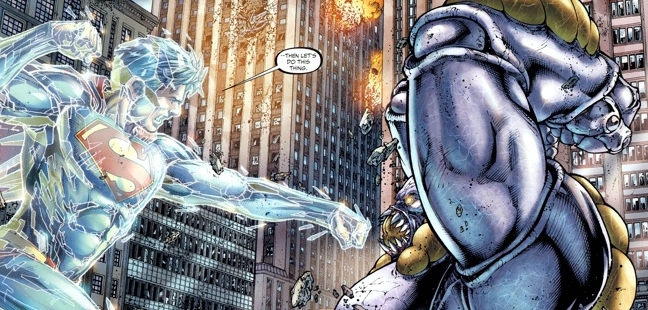
Several different men and women have worn the mantle of the Parasite over the years, but what they have all had in common is an undying hunger for life energy, and the ability to absorb the powers, memories, and abilities of anything and anyone they come into contact with. For these ravenous beings, Superman is less a nemesis than he is the ultimate meal, an energy source that can never truly be depleted, and whose energy grants tremendous power in the process. For Superman, the Parasites present a singularly difficult problem—how do you stop someone you cannot touch?
The answers to these questions have been many. Superman has at times worn protective costumes that prevent the Parasite from making contact, tried to attack the monster from a distance, or resorted to the simpler expedient of knocking it out before it can drain too much of his energy. The battles inevitably leave Superman exhausted and run down, a feat that many more powerful villains wish they could manage. An ongoing presence in the Superman comics since 1966, the attraction of the Parasites is that they force Superman to think outside the box, lest he allow his own great strength to be turned back on him.
If the Parasite has a limitation, it is its intellect. The Pre-Crisis Parasite was little more than a thug, while the Post-Crisis versions of the creature included a poorly educated janitor, and a set of adrenaline-junkie teenage twins who could not think more than a few seconds into the future. This is just as well. In Superman Earth-One: Volume Two, writer J. Michael Straczynski did his best to show just what the Parasite could do if it really set its mind to it. When serial killer Raymond Maxwell Jensen gained the power of the Parasite, the result was a psychopathic monstrosity that not only came within inches of killing Superman, but that briefly contemplated ending all life on Earth. With no upper limit on the amount of power it can absorb, the Parasite remains a deadly threat to Superman, and everything else that lives.
6. Cyborg-Superman
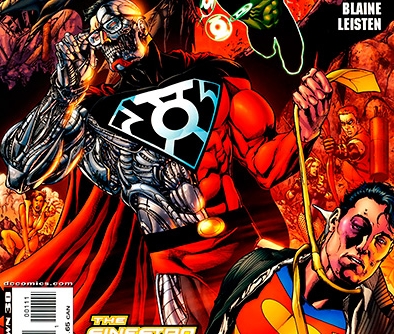
There is something powerfully symbolic in taking the image of Superman, one of comics’ ultimate exemplars of good, and darkening it. Warping it. Corrupting the image until what remains is a twisted mess that profanes everything Superman is meant to stand for. Over the decades any number of writers have created characters along these lines, with Superboy-Prime and the Crime Syndicate’s Ultraman being just two of the most obvious. Perhaps no more perfect expression of the concept has been found, however, than the Cyborg-Superman, who deliberately set out to ruin Superman’s good name in-universe and out, and whose damaged visage of metal and flesh aptly reflects the state of the mind beneath it.
Losing his body to cosmic radiation, astronaut Hank Henshaw was left a nomadic, technopathic intelligence, capable of possessing any piece of machinery that he encountered and subsequently, recreating said machinery out of nothing. This power made him dangerous enough when he was confined to STAR Labs on Earth. When Henshaw hijacked the birthing matrix that brought Superman to Earth, his threat increased a hundredfold. Outfitting himself with a body that was equal parts Kryptonian technology and Superman clone, Henshaw posed as a resurrected Superman after the hero’s apparent death in battle with Doomsday, and tried to forever sully his memory with atrocity. When Superman returned from the dead and banished Henshaw to space, the Cyborg-Superman did not take the defeat lying down. Upgrading his act with technologies from the Green Lanterns and the New Gods alike, Henshaw made repeated attempts to kill Superman, all while nursing a death wish of his own.
Equipped with Superman’s abilities, plus the power to control and replicate any and all technology, the Cyborg-Superman outguns Superman in almost all respects. Only Superman’s superior intelligence, and Henshaw’s own crippling madness have prevented him from emerging victorious. The New 52 reboot removed the Henshaw cyborg from continuity, but his legacy lives on in a new Cyborg-Superman, constructed from the corpse of Supergirl’s father, Zor-El. The idea of a roboticized Superman, armed with Kryptonian genes and alien weaponry is, it would appear, too good of one to give up.
5. Bizarro
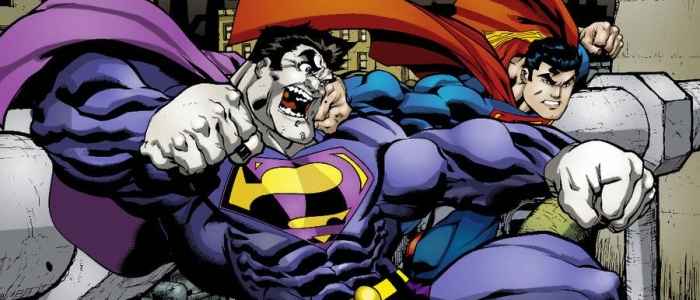
If the Cyborg-Superman exists to pervert Superman’s image, than Bizarro exists to mock it. An imperfect duplicate of Superman with backwards notions of right and wrong, Bizarro has been annoying and exasperating the Man of Steel since 1958, when a malfunctioning duplicator ray brought the first version of the character to shambling un-life. While that origin might seem silly by modern standards, it marked the first time that a writer had tried to create an evil Superman, an idea which, as we have previously seen, quickly caught on. Without Bizarro, the Phantom Zoners and the Cyborg-Superman might never have existed; hence his comparatively high place on the list.
With a mind that sees bad as good and good as bad and the reasoning skills of an especially limited toddler, Bizarro is more often a source of comic relief than serious menace. Unlike many of Superman’s foes, Bizarro does not want to be a villain, and at times, genuinely wants to help the man that he was cloned from. Unfortunately, Bizarro’s inability to understand regular human morality gets in the way, and Superman typically has to intervene before the duplicate does serious harm to itself or innocent bystanders. In one memorable Silver Age story, Bizarro gained his own home world—the square planet of Htrae, or Earth spelled backwards. This planet has since been populated with Bizarro duplicates of numerous other DC characters, including Bizarro-Luthor, Bizarro-Supergirl, and Bizarro’s best friend, Batzarro, enabling authors to create no end of Bizarro lunacy for Superman to suffer through.
Bizarro is not always a laughingstock, however, and thanks to his damaged mind, he can turn deadly, without even necessarily meaning to. In a Silver Age Legion of Superheroes story, Bizarro and his Legion of Stupor-Bizarroes decided to “save” a planet by placing a bomb at its centre, giving the people of that world the same “gift” that random chance had given Krypton. In more modern continuity, Bizarro has frequently found himself as muscle for Lex Luthor, with his screwed up logic dictating that he must do everything his enemy tells him to. As much victim as villain, Bizarro, with his flaming breath, freezing vision, and colossal reserves of strength, remains too potent a threat for Superman to just laugh off.
4. Mr. Myxptlk
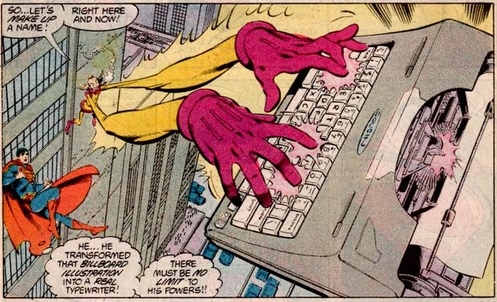
Most of the villains on this list made their debut years after Superman’s first appearance. Brainiac and Bizarro are creations of the fifties. Zod and the Parasite first appeared in the sixties. But the interdimensional imp known as Mister Mxyptlk burst onto the scene in 1944, a scant six years after Superman. This makes Mxy, as he is affectionately known, one of the oldest recurring Superman rogues after Lex Luthor, and the oldest of those who do not, and never have needed Kryptonite to level the playing field.
Hailing from the Fifth Dimension, Mxyptlk is to Superman what Superman is to an ant. Armed with both super-science and magic, Mxy can rewrite reality as he wills it, turning people into animals, reversing the laws of gravity, and shutting off Superman’s powers with a thought. One comic even demonstrated that the imp is perfectly capable of destroying the universe, only to recreate it and put it back in place milliseconds later, with none of its inhabitants any the wiser. With the incredible array of abilities as his disposal, Mxyptlk places Superman in the position of the over-matched hero who must use his brains to outwit his nemesis. His Kryptonian powers all but useless against the Fifth Dimensional pest, Superman becomes the underdog, forced to exploit Mxy’s personality flaws in order to pull off a victory.
Easily the most powerful character on this list, Mxy is kept in check by nothing but the laws of his people, and his own sense of fair play. Totally uninterested in killing Superman, or even ruining the Kryptonian’s life, Mxyptlk is content to remain an obnoxious trickster figure who, on some level, actually thinks of Superman as his friend. This is undoubtedly a good thing. As several alternate universe stories have shown, if Mxyptlk truly wanted to be evil, there would be precious little than anyone, including Superman, could do to stop him.
3. Doomsday
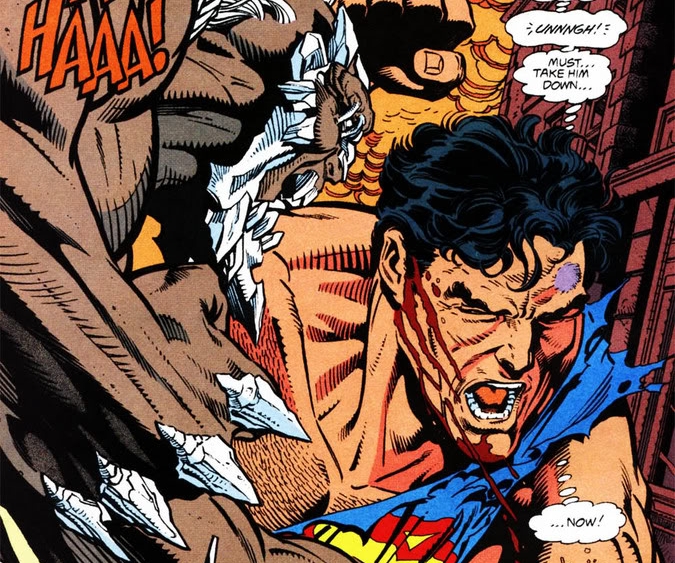
In 1993, in the midst of declining Superman sales, writer Dan Jurgens decided to do the unthinkable—kill off Superman. The idea was to demonstrate to readers, then enmeshed in the Dark Age of Comic Books, how much they would miss Superman were he to be gone, and how poorly the antiheroes of the day would perform if they had to step into the Man of Steel’s shoes. The only question of course, was how to kill Superman? Rather than relying on an existing villain to do the job, Jurgens came up with his own, the ominously named Doomsday. For several months before the character’s debut, every Superman comic would end with the image of a spiked fist pounding on a prison wall, and the caption “Doomsday is coming.” By the time Doomsday escaped his confinement, expectations among readers were high–though no one save Jurgens and his superiors knew where the story was going.
A hulking Kryptonian genetic experiment, Doomsday tore through the JLA as though they weren’t even there, before engaging Superman in an epic struggle in downtown Metropolis. While Superman was smarter and capable of more strategic thinking than the rampaging beast, Doomsday’s sheer brute strength and apparent inability to stay down for good made the battle a draw, with the final exchange of blows leaving both characters mortally wounded. The event made real-life headlines worldwide, with newspapers–edited, presumably, by people who did not understand the nature of comic book death–lamenting the demise of an American icon. Superman eventually returned from the dead, but so too did Doomsday, his unique physiology resurrecting him and putting him in Superman’s path once more.
Doomsday has been a recurring menace to Superman ever since, and while he has never topped his first appearance, he has never degenerated into a joke either. During “New Krypton” it took several dozen Kryptonians attacking all at once to put the monster down before he could massacre them all. In “Reign of Doomsday”, a series of Doomsday-clones in Lex Luthor’s employ captured every member of the Superman family and nearly ended the world. In the New 52, Doomsday’s abilities have been expanded even further, granting him the ability to regenerate from a single cell, and to infect any being that said cells come into contact with. An unstoppable engine of destruction, Doomsday is evidence that raw fury and insurmountable might can make up for almost any deficiency in the mental department.
2. Brainiac
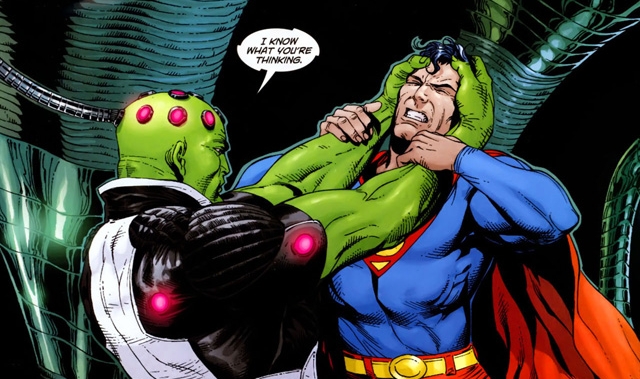
Writers enjoy pitting Superman’s brawn against his enemies’ brains. Two of his earliest foes, the Ultra-Humanite and Lex Luthor, both used their genius-level intellects to frustrate the then-comparatively simpleminded Last Son of Krypton. In 1958, Otto Binder—the same writer who brought readers Bizarro—took this idea to its logical conclusion with the creation of an alien mastermind whose intellect was unquantifiable. His name, Brainiac, would eventually enter the English lexicon as a popular slang term for an intellectual–a term that is almost never used in the comics themselves, where the Brainiac name is a watchword for invasion, mass murder, and theft on a truly interstellar scale. From a symbolic perspective, Brainiac is the alien that Superman is not–hostile, cold-blooded, inimical to all other races, and possessed of inscrutable motives incomprehensible to the average person. As Supergirl noted in 2008’s “Brainiac”: “You’ve told me Lex Luthor is everything bad about humanity. Well Brainiac is everything bad about aliens.”
Brainiac’s initial scheme, shrinking down cities and keeping them in bottles, was strange even by the standards of the Silver Age of Comics. Fans were far more surprised, however, by what happened when Superman tried to capture the alien criminal. Secure behind his deflector shields, Brainiac laughed off Superman’s attempts to batter his way through, escaping to fight another day. In 1983 the more mature nature of Bronze Age storytelling saw Brainiac re-imagined as a skeletal robot that aimed to conquer the universe, and whose arsenal of alien weapons let him match Superman blow-for-blow. Assuming a leadership role among the Superman rogues, Brainiac was willing to exploit any catastrophe, even the “Crisis on Infinite Earths” for his personal gain, risking the existence of the multiverse to advance his personal agenda. In the final Pre-Crisis Superman story, “Whatever Happened to the Man of Tomorrow?” Brainiac was at the heart of the conspiracy to destroy Superman, his force field keeping the rest of the Justice League trapped outside the Fortress of Solitude and unable to help their friend.
In Post-Crisis continuity, Brainiac has worn any number of guises. He has been a sideshow psychic, a robotic conqueror like his Bronze Age self, and a living computer program capable of seizing control over any system he is implanted into. He has fed on human spinal fluid, hijacked countless bodies, transformed Metropolis into a sci-fi dystopia, and tried to remake the universe in his own image. In 2008, the character was redesigned again, this time as an alien cyborg with an army of robotic probes, a history of wiping out entire cultures–though only after securing all their data for himself–and an end goal of annihilating all of creation. This incarnation of the character proved to be the deadliest Brainiac yet, capturing Superman and attempting to kill him by downloading several worlds’ worth of data into the Kryptonian’s mind, sending his entire nervous system into overload. Brainiac subsequently attacked the colony of New Krypton, massacring thousands of fully-empowered Kryptonians while Superman tried desperately to stop him. Always cold, always calculating, and Superman’s most recognizable foe after Luthor, Brainiac has been a physical challenge since his first appearance, consistently demonstrating that he is so much more than just a brilliant mind.
1. Mongul I
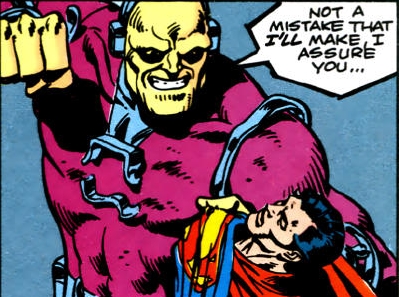
Before Terence Stamp made General Zod a cultural icon instead of an also-ran. Before Brainiac received the deadly 1983 upgrade that turned him into a killing machine. Before Doomsday was even a thought in Dan Jurgens’ mind. Before all of them, there was Mongul I. Created by Len Wein and Jim Starlin in 1980, Mongul was the first recurring Superman villain who was both more powerful than Superman, and completely, irredeemably evil. An intergalactic despot with a taste for gladiatorial games and a streak for sadism, Mongul menaced Superman throughout the 1980s, and proved, with his vastly superior strength and durability, to be one enemy Superman could not hope to defeat in combat. Battles between the two usually saw Mongul not matching, not equaling, but dominating the usually unbeatable Man of Steel, something that audiences were far from used to seeing.
It was Alan Moore who, in “For the Man Who Has Everything”—commonly regarded as one of the greatest Superman comics ever written—truly made Mongul into a horror. Using his Black Mercy plant to trap Superman in a fantasy world, Mongul proceeded to brutalize those who came to the Man of Tomorrow’s rescue, giving Wonder Woman one of the worst beatings of her career. When Superman was freed from the Black Mercy, Mongul stunned his nemesis, and the audience, when he demonstrated that he was capable of taking hits from an enraged, Pre-Crisis Superman, and remaining standing–a feat that no other supervillain of the era could claim. Mongul was, in fact, winning the battle when Superman’s friends struck him with his own Black Mercy, forever ending his dreams of galactic conquest. Readers, who enjoyed seeing Superman as the David to Mongul’s Goliath, responded extremely well to Moore’s story, and those that had come before, enshrining the extraterrestrial tyrant as one of Superman’s definitive Bronze Age opponents.
Modern continuity has not been kind to the Merciless Mongul. The Post-Crisis version of the character was significantly weaker than the Pre-Crisis one, losing battles to both Flash and Green Lantern, before being killed off for good by the demon lord Neron. He was succeeded by his son, Mongul II, who fought Superman several times before becoming a fixture in Green Lantern’s rogues’ gallery. In the New 52 the original Mongul has made a comeback, though whether he will be a major part of Superman’s life again is as yet unknown. Still, Mongul’s influence remains strong. He established that it was possible to have an utterly evil, non-Kryptonian villain who was an able schemer, and Superman’s physical superior, a combination that had never been attempted before. He also proved that Superman’s psyche was a surprisingly vulnerable target, and in doing so, helped to re-humanize the sometimes remote Man of Steel. The success of the Mongul stories of the 1980s may well be responsible for the creation, or in some cases, the reinvention of several of the other characters on this list, with both Doomsday and the later incarnations of General Zod and Brainiac owing something to the alien warmonger. The shadow that Mongul, and in particular, “For the Man Who Has Everything” has cast over the Superman book would doubtless please the warlord’s brooding ego, the only part of him to equal, in its intensity, his sheer, raw power.
The next time somebody tells you that only Kryptonite can provide a Superman story with dramatic tension, tell them how wrong they are. Direct them to General Zod and his veritable army of evil Kryptonians, or to Kryptonian wannabes like Cyborg-Superman and Bizarro. Tell them about the Parasite and his ability to drain Superman’s powers, or the Silver Banshee and Mxyptlk whose magic bypasses those powers altogether. Finally, introduce them to the triple threat of Doomsday, Brainiac, and Mongul I, who without Kryptonite, magic, or duplicating Superman’s powers, have regularly taken the Last Son of Krypton to his absolute limits. Superman’s rogues gallery is as varied as that of any superhero in existence. That fact should be celebrated, not ignored in favour of a single green rock.
Works Cited
Cowsill, Alan, Alastair Dougall, Alex Irvine, Matthew K. Manning, Michael McAvennie and Daniel Wallace. DC Comics Year by Year: a Visual Chronicle. New York: DK Publishing, 2010.
Dougall, Alastair, edit. The DC Comics Encyclopedia: The Definitive Guide to the Characters of the DC Universe. New York: Dorling Kindersley Limited, 2004.
Wallace, Daniel. DC Comics Supervillains: The Complete Visual History. San Rafael: Insight Editions, 2014.
What do you think? Leave a comment.

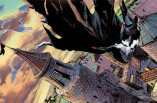

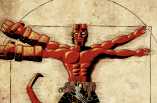

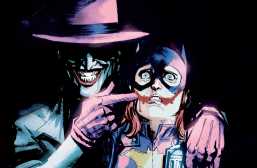
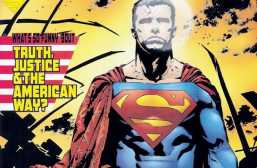
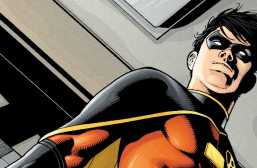
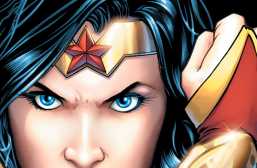
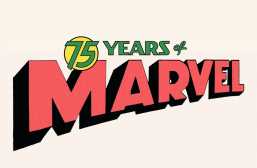
Great article. It’s amazing, with all the interesting villains that Superman has at his disposal, what villains do we see in the superman movies: Lex Luther and General Zod. Lame! Im surprised that no one has ever thought about making Brainiac the villain in a Superman movie. It just makes sense.
Agreed, wonderful list. The fact that Brainiac has been continuously overlooked as a villain for a Superman film is atrocious. He’s an intellectual villain with psychopathic tendancies–he’s a sophisticated Joker who’s end game can be sympathized with to an extent in many of his arcs.
Man of Steel tried to create a sympathetic villain with Michael Shannon’s Zod–a character who was trying to achieve a goal that was embedded in his DNA in regards to the preservation of Krypton. And yet, the character as a whole misses throughout the film. If a similar route was taken with a character like Bizarro I think the film could have been a lot better–provided of course that Zach Snyder toned down the useless violence and overwhelming allusions to Christianity.
Excellent work. It often feels that the mainstream isn’t aware that Lex Luthor isn’t Superman’s only villain. I’m so glad to see you mention Bizzaro and Silver Banshee, they always need some love!
I really enjoyed this article. A lot of people I know complain about how Superman is such a boring character because he’s basically invincible with the one weakness of Kryptonite. This article offers a great counterargument. My favorite character on this list is Mongul, the rare master of psychological and physical warfare. “For The Man Who Has Everything” is easily one of the best comics stories I know, and it’s a shame Mongul doesn’t get any respect nowadays.
I concur, and there’s a reason why Mongul is number one on this list.
Mr.Mxyzptlk is way way way way stronger.
I love doomsday, the most strong and pure evil of all supervillians!
For people that don’t know comics doomsday kills superman but yes he comes back and so does doomsday when doomsday dies he comes back immune to whatever killed him previously in the comics doomsday kills superman and almost all if the justice leage
Brainiac reminds me of Ultron from Avengers 2
The characters are similar, though order of appearance is the other way round. Brainiac debuted 1958, Ultron 1968.
what is the difference between mongul and darkseid? i kinda confuse between them alot
Darkseid’s a god and one of the biggest bads in the DC Universe. Mongul’s just an alien conqueror, and a tier down the power scale. Where Mongul is stronger than Superman, Darkseid’s a match for the whole of the JLA and then some.
Yeah, I like Mongul,though, at first, I thought he was a Darkseid wannabe.
I remember reading something when Mongul tried to steal the Sinestro Corp and call it the Mongul Corp HAHA!
That was Mongul II, the original’s son, who lacks most of his dad’s brains.
Mxysptlk was good for the first 5000 years doing good deeds for people, then he got bored of that and became mischievous.
When you see this fight and the comics were doomsday is still an animal using just his instincts to kill ppl and how he hates life that he later on becomes earth greatest hero
Superman vs. Brainiac is the greatest fight ever!
Mongul from Young Justice is very cooler looking.
This was a fantastic article. Well researched, well written, and, from one Superman fan to another, much appreciated. Though, I have to argue the point about Darkseid. Yes, absolutely, I see the point that he’s a DC Universe villain, a threat to all of existence comparable to Marvel’s Thanos. But I don’t think I’ve ever seen Darkseid up against anyone other than Superman. What I mean is, yes, he attacks universes at a time with hordes of destruction and anarchy, necessitating the combination of the world’s heroes to stop him. But it’s never without Superman leading the charge. And I don’t recall off the top of my head (correct me if I’m wrong) Darkseid ever making it his personal mission to destroy any particular hero outside of Superman (not counting Orion or Mister Miracle). I don’t think he sees anyone other than those three as a threat to him and his empire and Superman most of all. While Lex Luthor is Superman’s greatest foe by quite a margin, that relationship is defined by a god with unlimited potential against a man with squandered potential. Darkseid’s relationship to the Man of Steel is more along the lines of the Ultimate Good against the Ultimate Evil. And that alone is just too perfect to not have Darkseid be classified as a Superman villain. I’m not arguing with the list, I think it’s perfect. But Darkseid is.
I agree with this. Even in the DCAU, which I think functions well as condensed examples of the prominent relationships of the DC characters even if it isn’t technically relevant to a comics continuity list like this, Darkseid is presented as a big bad… and then almost exclusively fights Superman.
I’d say actually the DCAU is where people started getting the idea that Darkseid was a Superman villain.
Doomsday is a strong as superman during the day, and doomsdays stenght comes from genetics unlike the sun for superman. Doomsday would and could still kill him at any time of day
All hail Brainiac… the mind of minds.
My favourite Mongul quote: “For a moment I thought you were going to kill me, how stupid of you to hesitate like that. Not a mistake ill make I can assure you”
Incredible article. One of the best listicles I’ve read in a very long time. My knowledge of Superman villains mostly stems from Wikipedia articles but this was both informative and interesting. Never knew about the Alan Moore Mongul story; I’m going to have to check that out.
Definitely check it out. Probably the best Pre-Crisis Superman story.
Mongul arguably was one of the three strongest people fought in young justice.
I never did like how people forget just how many good villians Superman has besides Lex Luthor
This article was freaking awesome! I didn’t know like half of them, but they were all cool.Bizzaro will always be my favorite, closely followed by Doomsday. It just shows how creative the comic writers can be! Great Article!
Great article! I’m a big fan of Superman. I just have a question, would Batman be considered a Superman villain?
Sure. Why not? As S. Lee said, anything is possible if a comic writer wants it.
Any villain with a magical item should be able to kill Superman though. Time travelers too. Really a good thief should be able to get the slip on him if they have a magical weapon.
I’m really glad there are some villains that don’t need it. It adds flavor to Superman stories, which can sometimes get boring and repetitive.
A great article to read! My hope is that, in the future, the Superman movies will feature more interesting villains that can go toe-to-toe with big blue. I believe that the average comic book movie goer is not aware of the kind of villains out there for Superman to fight, and a new an interesting villain on the big screen could change that perspective for good.
Nice list, especially since you didn’t use Darkseid. It just shows that Superman is a little more vulnerable than mainstream fans believe. If this was a list of 11 Darkseid would be number one.
This is a really great article, well written and easy to understand. I have always been so annoyed when people talk about Superman as if he’s this boring, invincible, unrelatable character. Superman is one of the greatest heroes of all time, arguably made all the better by the existence of his most powerful and deadly foes, who provide a stark contrast to the Man of Steel. I was familiar with most of the villians on this list, but I had little knowledge of the extensive history behind them, particularly Zod. I thought I knew home pretty well but you showed me. This makes me like his character even more, though I think more of Superman’s other rogues should be included in the movies for sure. Again, really great article and I hope you write more.
Never realized had that many powerful villians.
Part of me wishes Superboy-Prime had been handled a bit better and not been made too meta. And All Star’s brilliant but brief Solaris was a interesting type of foe for Superman.